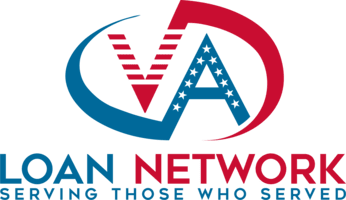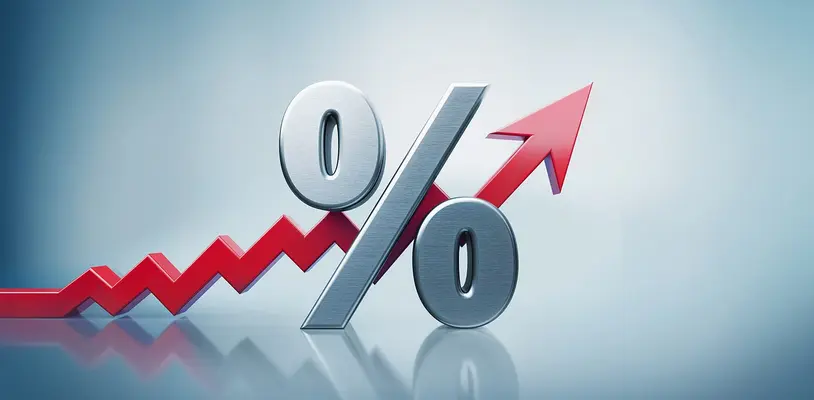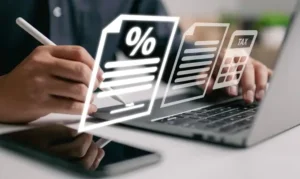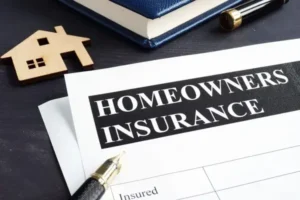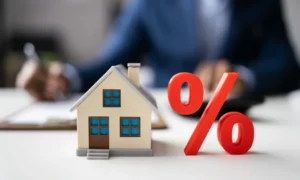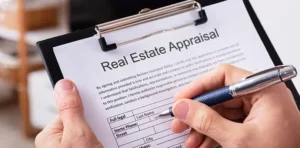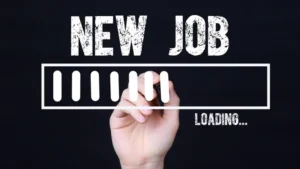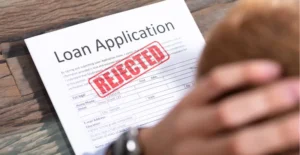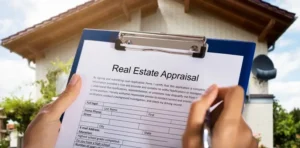Are you a veteran, active-duty service member, or surviving spouse looking to buy or refinance a home? A Veteran Affairs (VA) loan may be your key to homeownership with better interest rates and no down payment requirements.
Below, we’ll explore how VA home loans work, why they typically cost less than conventional mortgages, and the steps you can take to secure the best VA loan rate possible.
In this Article
Why VA Loan Rates Are Often Lower Than Conventional Mortgages
Are you a veteran, active-duty service member, or surviving spouse looking to buy or refinance a home? A Veteran Affairs (VA) loan may be your key to homeownership with better interest rates and no down payment requirements. Below, we’ll explore how VA home loans work, why they typically cost less than conventional mortgages, and the steps you can take to secure the best VA loan rate possible. For general information about government benefits, you can also visit Benefits.gov.
What Are VA Loans?
VA loans are mortgages guaranteed by the U.S. Department of Veterans Affairs. This guarantee reduces lender risk and allows them to offer competitive interest rates and other favorable terms, including the ability to buy a home with no down payment and no private mortgage insurance (PMI). Only veterans, active-duty service members, and certain surviving spouses are eligible. Learn more about eligibility on the VA’s official eligibility page.
Types of VA Loans
- VA Purchase Loan: Designed for buying a primary residence. You can often finance 100% of the home’s value.
- VA Cash-Out Refinance: A VA cash-out refinance lets you tap into your home’s equity by refinancing your existing mortgage for more than you currently owe.
- VA Interest Rate Reduction Refinance Loan (IRRRL): Also known as a VA Streamline Refinance, this is a quick way to refinance to a lower rate or switch from an adjustable-rate mortgage to a fixed-rate mortgage.
Why Are VA Loan Rates Typically Lower Than Conventional Mortgages?
The VA’s backing on these loans significantly reduces the lender’s exposure to risk. If a borrower defaults, the Department of Veterans Affairs covers part of the lender’s loss. This safety net translates to lower interest rates compared to conventional loans, which lack a government guarantee. As a result, many VA borrowers enjoy a rate advantage of about 0.25% to 0.5% below comparable conventional mortgage rates. For broader trends and updates about interest rates in the United States, you can explore FederalReserve.gov.
Key Benefits of VA Loans
- No Down Payment: You can buy a home with no money down.
- No PMI: VA loans don’t require private mortgage insurance, even with 0% down.
- Lower Interest Rates: VA loan rates are often below rates on conventional mortgages.
- Flexible Credit Requirements: Lenders may approve borrowers with credit scores as low as 580.
- No Loan Limits: While the VA no longer sets a cap on loan amounts, lenders will still evaluate your credit and income to determine how much you can borrow.
The Certificate of Eligibility (COE)
Before you can apply for a VA loan, you need a Certificate of Eligibility (COE). This document confirms you meet the VA’s service requirements. You can request your COE through the VA’s eBenefits portal, by mail via this VA link, or with the help of a VA-approved lender. Once you have your COE, you’re ready to start the formal application process.
The VA Loan Process: Step by Step
- Obtain Your COE: Apply online via eBenefits or work with a VA-approved lender to secure your Certificate of Eligibility.
- Check Your Credit and Finances: Pull your credit report, pay down high balances, and ensure you have stable employment or consistent income.
- Choose a VA-Approved Lender: Not every lender offers VA loans, so confirm they’re authorized to handle VA financing.
- Get Preapproved: A Preapproval letter shows sellers you’re a serious buyer with financing ready. To learn more about mortgages in general, check out the Consumer Financial Protection Bureau.
- Find a Home: Work with a real estate agent experienced in VA transactions to find a property that meets VA guidelines.
- Appraisal & Underwriting: The lender orders a VA appraisal to verify the home’s value and ensure it meets VA standards. An underwriter then reviews your file.
- Close on Your Loan: Review and sign final documents, pay any closing costs, and receive the keys to your new home.
Factors That Influence VA Loan Rates
- Credit Score: Higher scores generally secure lower rates.
- Loan-to-Value (LTV) Ratio: Although a down payment isn’t required, adding even 5% down could lead to a better rate.
- Market Conditions: Rates fluctuate based on inflation, Federal Reserve policy, and other economic factors. Check current market trends before locking in.
- Loan Term: Shorter-term loans (e.g., 15-year) usually have lower rates, but higher monthly payments.
The VA Funding Fee
The VA charges a funding fee to keep the loan program running. This one-time cost typically ranges from about 1.25% to 3.3% of the loan amount. The exact fee depends on factors such as down payment size and whether it’s your first-time or subsequent use of a VA loan. You can learn more from the VA’s official funding fee factsheet. You can pay this fee at closing or roll it into your mortgage. Veterans receiving disability benefits are exempt from the funding fee, which can save thousands of dollars.
Funding Fee Rates for 2025
Purchase and Construction Loans
| Down Payment | First-Time Use | Subsequent Use |
|---|---|---|
| None | 2.15% | 3.3% |
| 5% or more | 1.5% | 1.5% |
| 10% or more | 1.25% | 1.25% |
Cash-Out Refinance Loans
| Loan Use | Funding Fee |
|---|---|
| First-Time Use | 2.15% |
| Subsequent Use | 3.3% |
Interest Rate Reduction Refinance Loans (IRRRLs)
| Loan Use | Funding Fee |
|---|---|
| All Uses | 0.5% |
Other Loan Types
| Loan Type | Funding Fee |
|---|---|
| Native American Direct Loan | 1.25% (Purchase), 0.5% (Refinance) |
| Manufactured Home Loans | 1.0% |
| Loan Assumptions | 0.5% |
| Vendee Loans (VA-acquired property) | 2.25% |
When to Consider a Conventional Mortgage Instead
While VA loans are ideal for many service members, they’re not always the perfect fit. You might consider a conventional mortgage if:
- You plan to put 20% or more down, eliminating PMI and potentially matching VA loan rates.
- You want to purchase a second home or investment property, which VA loans cannot be used for.
- You have excellent credit and want to avoid the VA funding fee.
How to Secure the Best VA Loan Rate
- Check Multiple Lenders: Interest rates and fees vary, so compare offers from at least three VA-approved lenders.
- Improve Your Credit Score: Pay down debt, make timely payments, and keep credit card balances low.
- Consider a Down Payment: Although not mandatory, adding some upfront cash may lower both your interest rate and funding fee.
- Buy Discount Points: If you plan to stay long-term, paying points to reduce your rate could lead to substantial savings over the life of the loan.
- Lock in Your Rate: Once you find a favorable rate, lock it in to avoid losing out if rates rise.
Frequently Asked Questions
Who sets VA loan interest rates?
VA loan rates are determined by private lenders, not the Department of Veterans Affairs. Rates vary based on market conditions, lender policies, and individual borrower qualifications.
How do VA loan rates compare to conventional rates?
VA loans typically offer lower interest rates than conventional loans because the VA backs a portion of the loan, which lowers lender risk.
What factors influence my VA mortgage rate?
Your VA mortgage rate is influenced by your credit score, loan amount, loan term, debt-to-income ratio, and overall market conditions.
Are VA refinance rates different from purchase rates?
Yes, VA refinance rates can differ from purchase rates depending on the type of refinance, lender policies, and your financial profile.
What is a VA rate lock?
A VA rate lock freezes your interest rate for a specific time period, helping you avoid increases while your loan is processed and finalized.
Can I buy down my VA loan rate with discount points?
Yes, you can lower your interest rate by paying discount points at closing. Each point typically costs 1% of the loan amount.
How often do VA loan rates change?
VA loan rates fluctuate daily based on changes in the financial market, inflation trends, and investor demand for mortgage-backed securities.
What is the current average VA loan rate?
As of 2025, the national average 30-year fixed VA loan rate is approximately 6.97%, though this varies by lender and borrower profile.
Does the VA set a minimum credit score for loans?
The VA does not set a minimum credit score requirement, but most lenders prefer a score of 620 or higher for approval.
Are VA loan rates negotiable?
Yes, VA loan rates are negotiable. It’s smart to shop around and get quotes from several lenders to find the best rate and terms.
The Bottom Line
VA loans are a fantastic resource for veterans and active-duty service members to achieve homeownership with potentially lower mortgage rates, no PMI, and the flexibility of no down payment.
By obtaining your Certificate of Eligibility, comparing multiple lenders, and staying on top of your finances, you’ll be well on your way to securing a VA home loan tailored to your unique situation.
Regardless of whether you go with a VA purchase loan, refinance, or cash-out program, benefits typically are more than average mortgage conditions—particularly interest rates.

